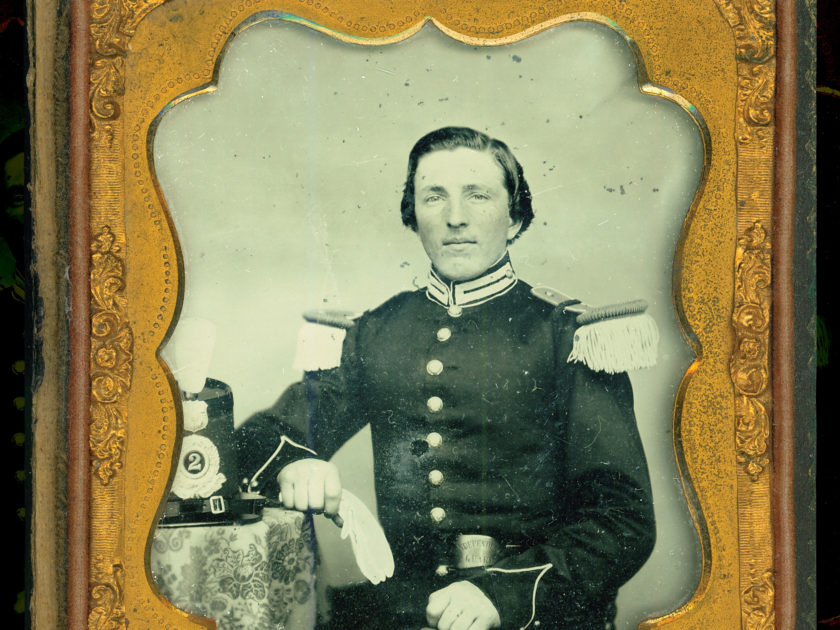The first interest in determining the accurate appearance of historic uniforms may have occurred in the 1850s.* In that decade, a historian attempted to debunk the notion that militia companies dressed in “Continental” uniforms of blue and buff, using newspaper descriptions of deserters to reconstruct the actual uniforms soldiers wore in the War of Independence. During that period, a Boston publisher sought to bring together the militia uniform regulations of all the states in a reprint of the 1851 federal uniform regulations. While most state adjutants general replied with the formal dress regulations, it was telling that the state of Georgia replied with “A Shirt-collar and a pair of Spurs.”

Most populous states had either complex descriptions of regulation uniforms in line with federal guidelines, or acknowledged that the uniforms of their militia were at the “whim or caprice” of the individual units. Even in New York, acceptance of pre-existing non-regulation uniforms were “grandfathered” into the system. Uniforms of an antique style, such as those worn by the 7th New York Regiment, were tolerated, despite the state’s active attempt to unify the appearance of its militias. Even by 1860, the dress within the militias varied by state. But what should a well-dressed militiaman have worn then?
A good example can be found in the accompanying image of a New Jersey militia soldier circa 1860. Until 1859, New Jersey’s militia lacked a common dress. But in that same year, many of the state’s regiments switched to dark blue frock coats, light blue trousers with white stripes and white accouterment belts for infantrymen and black for riflemen. This uniform was, for all intents, the modern standard for militia uniforms in 1859. The dress shako based upon the U.S. dress caps adopted in 1851, but abandoned in the Regular service in 1858, was absolutely “up to date.” As a result, this unidentified militiaman had become a thoroughly modern soldier by 1860 standards.
*George Washington’s step-grandson and adopted son, George Washington Parke Custis, did seek information on Revolutionary War uniforms from veterans for a series of folk art paintings he attempted prior to the Civil War.
MI Senior Editor Michael J. McAfee is a curator at the West Point Museum at the United States Military Academy, and author of numerous books. He has curated major museum exhibitions, and has contributed images and authoritative knowledge to other volumes and projects.
SPREAD THE WORD: We encourage you to share this story on social media and elsewhere to educate and raise awareness. If you wish to use any image on this page for another purpose, please request permission.
LEARN MORE about Military Images, America’s only magazine dedicated to showcasing, interpreting and preserving Civil War portrait photography.
VISIT OUR STORE to subscribe, renew a subscription, and more.

